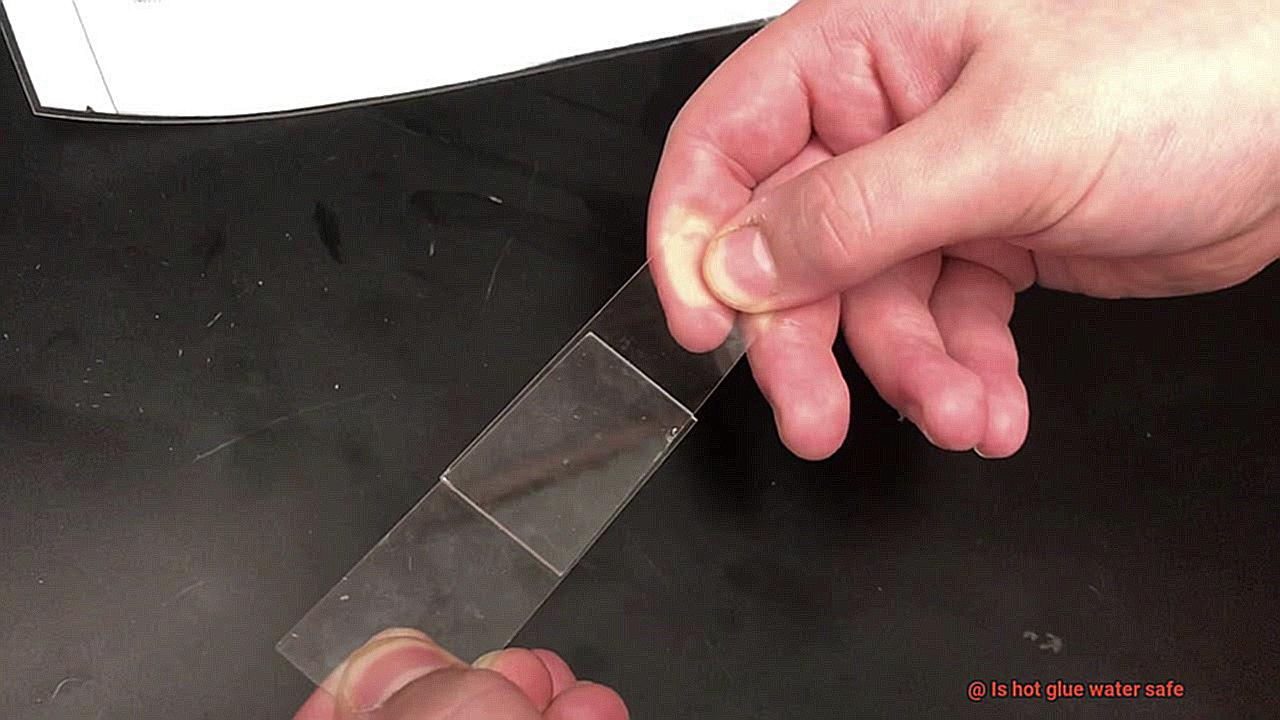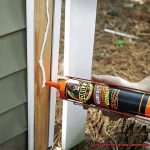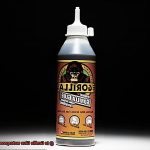Hot glue has become the go-to adhesive for many DIY projects, especially among crafters. But with its widespread use comes the question: is hot glue water safe? Let’s face it, there are plenty of scenarios where a water-resistant adhesive is essential, such as when creating items that will be exposed to moisture or when repairing outdoor gear.
So, is hot glue up to the task? Well, it depends on the type of hot glue you’re using. Some formulations are indeed water-safe, while others will disintegrate upon contact with water. In this post, we’ll explore the ins and outs of whether hot glue is water safe and how you can ensure your project stays intact even when wet.
We’ll dive into the different types of hot glue and their unique properties, uncovering what makes them water-resistant. We’ll also explore the science behind water-resistance and how it applies to adhesives. From there, we’ll get practical and look at real-world applications for hot glue in various projects.
But let’s not forget about limitations. We’ll discuss instances where even water-resistant hot glue might not be enough and alternative adhesive solutions may be necessary.
So whether you’re a seasoned DIY enthusiast or just curious about all things adhesive-related, read on to discover everything you need to know about whether hot glue is water safe and how to make sure your project stays strong even in damp conditions.
What is Hot Glue?
Contents
- 1 What is Hot Glue?
- 2 Types of Hot Glue
- 3 Is Hot Glue Water Safe?
- 4 Factors Affecting Water Resistance in Hot Glue
- 5 Differentiating Between Water-Resistant and Waterproof Glues
- 6 Advantages and Disadvantages of Using Water-Resistant Hot Glue
- 7 How to Use Water-Resistant Hot Glue for DIY Projects
- 8 Common Mistakes to Avoid When Using Water-Resistant Hot Glue
- 9 Conclusion
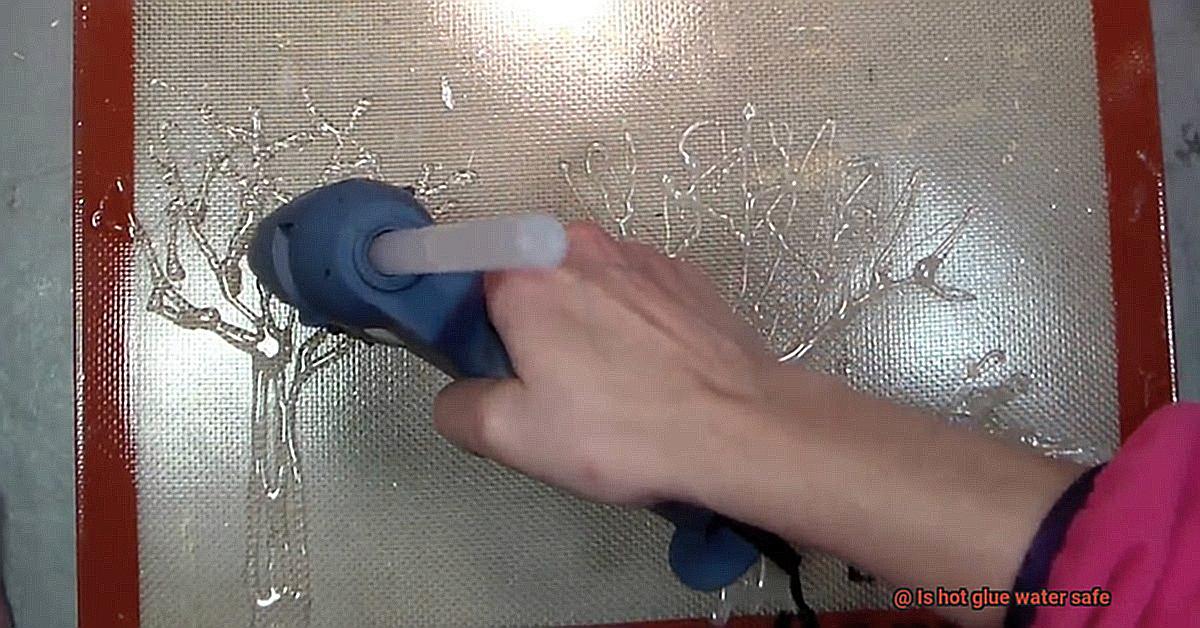
Hot glue, also known as hot melt adhesive, is a magical substance that can transform your DIY project into a masterpiece. This versatile adhesive is made up of thermoplastic polymers that are melted and applied using a hot glue gun. As it cools down, it solidifies and creates an unbreakable bond between materials.
Hot glue comes in different forms such as sticks, pellets, and granules. It can bond various materials such as wood, plastic, metal, fabric, and ceramics with ease. Due to its rapid bonding time and strength, hot glue is widely used in different industries.
However, not all hot glues are created equal. There are different types of hot glue available in the market, each with their unique properties and strengths. Some hot glues are designed for specific applications such as high-temperature resistance or flexibility.
Despite its strengths, one question often arises – is hot glue water-safe? The answer depends on the type of hot glue being used.

Most hot glues are not water-resistant due to the nature of the polymer compounds used in their formulation. They can weaken or dissolve when exposed to water because the polymers soften or melt when they come into contact with water.
But don’t worry. Some hot glues are specifically designed to be water-resistant, making them perfect for use in wet environments. These types of hot glues are often labeled as “waterproof” or “water-resistant” on their packaging. They are made with stronger polymer compounds that can withstand exposure to water without losing their adhesive properties.
When choosing the right hot glue for your project, always check the label before using it and opt for water-resistant or waterproof varieties if needed. It’s essential to note that even if a hot glue is labeled as water-resistant or waterproof, it does not mean that it can withstand prolonged exposure to water or complete immersion.
Types of Hot Glue
Hot glue is a versatile adhesive that can be used for various projects, but its water resistance level is a major concern. Different types of hot glue are available in the market, and each type has its own unique characteristics. Let’s delve into the different types of hot glue and their water resistance levels to help you choose the right adhesive for your project.
Low-temperature hot glue
This type of hot glue has a lower melting point than other types and is less viscous, making it perfect for delicate materials such as silk, foam, and lace. However, it is not water-resistant and may dissolve when exposed to water. So, it’s not recommended for projects that will be exposed to moisture.
High-temperature hot glue
This type of hot glue has a higher melting point than low-temperature hot glue and is more viscous, making it ideal for bonding heavy-duty materials like metal, wood, and plastic. It has better water resistance than low-temperature hot glue but may still dissolve when exposed to water for an extended period. So, it’s not suitable for projects that will be exposed to humidity or moisture.
Waterproof hot glue
This type of hot glue is specifically designed to be water-resistant and can withstand exposure to water without dissolving or losing its adhesive properties. It’s perfect for outdoor projects or items that will be exposed to moisture. The waterproof hot glue creates a strong bond that can withstand exposure to water for long periods.
Removable hot glue
This type of hot glue is designed to be easily removed without leaving any residue behind, making it ideal for temporary bonding applications. However, it is not water-resistant and may dissolve when exposed to water.
Colored Hot Glue
This type of hot glue comes in various colors and can be used to add a decorative touch to your project. However, it’s essential to note that some colored hot glues may not be water-resistant and may dissolve when exposed to water.
Is Hot Glue Water Safe?
Hot glue is a versatile adhesive that can be used for a multitude of projects, but when it comes to using it in water, things can get a bit murky. So, is hot glue water-safe? Well, the answer is not as simple as yes or no.
Firstly, it’s important to note that in general, hot glue is not considered to be waterproof. When exposed to water, hot glue can lose its adhesive properties and weaken over time. So, if you’re thinking of using hot glue on an item that will be exposed to water, such as a shower curtain or a boat cover, you may want to reconsider your options.
However, all hope is not lost. There are some types of hot glue that are specifically designed to be water-resistant. These glues are labeled as “marine” or “waterproof” and are meant to be used in applications where the glue will come into contact with water. So, if you need to use hot glue in a wet environment, make sure you choose a product that is specifically designed for this purpose.
When using hot glue in water, it’s also important to consider the temperature of the water. Hot glue is designed to melt at high temperatures, so if it comes into contact with hot water, it may melt and lose its adhesive properties. On the other hand, if the water is too cold, the glue may become brittle and break apart. So be sure to take note of the temperature of the water before using hot glue.
In conclusion, while hot glue can be a useful adhesive for many projects, it’s important to consider its limitations when it comes to water resistance. To summarize:
- Hot glue is generally not considered waterproof
- Use specific “marine” or “waterproof” hot glue for wet environments
- Be mindful of the temperature of the water before using hot glue
Factors Affecting Water Resistance in Hot Glue
When it comes to water resistance, hot glue can be a bit finicky. So, what factors affect the water resistance of hot glue? Let’s take a closer look.
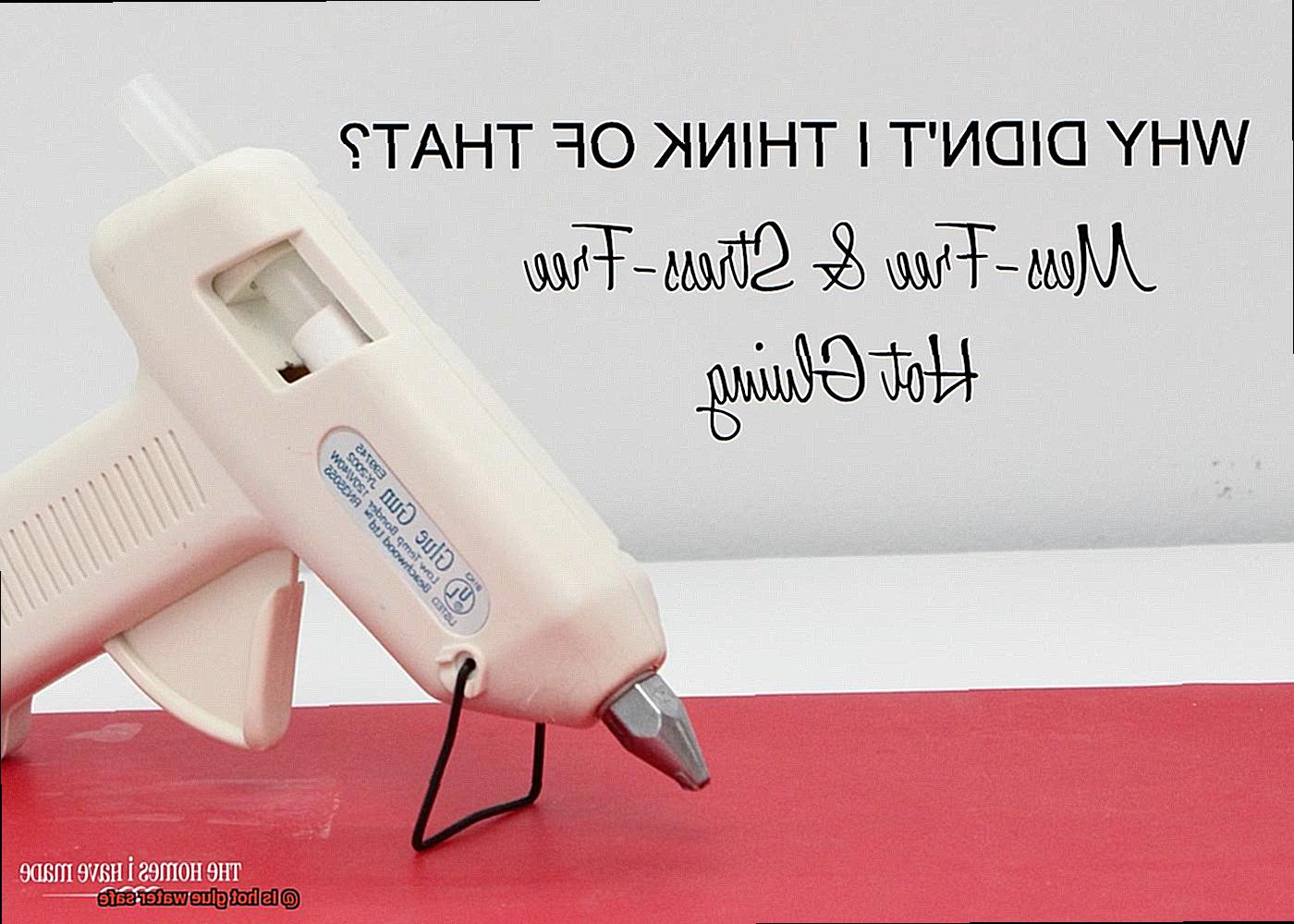
Firstly, the type of hot glue used is a critical factor in determining its water resistance. There are various types of hot glue available, including low-temperature, high-temperature, and industrial strength. Each type has unique properties that affect its ability to resist water. For example, low-temperature hot glue has lower water resistance compared to high-temperature and industrial strength hot glue.
Secondly, the surface on which you apply the hot glue also plays a significant role in its water resistance. Hot glue adheres best to porous surfaces like fabric, paper, and wood. However, it may not adhere as well to non-porous surfaces like glass or metal. In such cases, water can easily penetrate through the gaps between the glue and the surface, causing it to weaken or break apart.
Thirdly, the amount of hot glue applied is crucial for its water resistance. If too little glue is used, it won’t provide adequate coverage to prevent water from seeping through. On the other hand, if too much glue is applied, it may take longer to dry and may not fully cure, resulting in poor water resistance.
Lastly, environmental factors like temperature and humidity can significantly affect the water resistance of hot glue. High temperatures can cause the glue to soften and weaken while high humidity can prevent it from drying properly.
Differentiating Between Water-Resistant and Waterproof Glues
It’s time to understand the difference between water-resistant and waterproof glues. As an expert, I can tell you that choosing the right type of glue is crucial for ensuring your project’s longevity.
Water-Resistant vs. Waterproof Glues:
Water-resistant glues are designed to withstand moist or humid environments. They can resist mild exposure to moisture but cannot hold up against complete submersion in water. On the other hand, waterproof glues are specifically designed to hold up even when completely submerged in water.
Hot Glue:
If you’re a fan of hot glue, you should know that it falls under the category of water-resistant glues. While hot glue can handle some exposure to moisture, it is not completely waterproof. This means that if you’re planning on using hot glue for a project that will be exposed to water for an extended period of time, it may start to break down and lose its bond.
Not All Water-Resistant Glues Are Created Equal:
It is important to note that not all water-resistant glues are created equal. Some may be able to handle more moisture than others, but they still have their limits. Always read the label of a glue and understand its limitations before using it for a project that will be exposed to moisture.
The Right Glue for Your Project:
So, which glue should you use for your project? If your project will not be exposed to prolonged moisture or water, hot glue is a great option. It is perfect for crafts, home decor, and other indoor projects. However, if you need a glue that can handle complete submersion in water, you will need to use a different type of waterproof glue specifically designed for that purpose.
Advantages and Disadvantages of Using Water-Resistant Hot Glue
This type of adhesive is a popular choice for many DIY projects and home repairs due to its versatile nature and strong bonding capabilities.
One of the biggest advantages of water-resistant hot glue is its versatility. It can be used for a wide range of applications, including outdoor crafts and projects that require exposure to water. Additionally, it creates a strong bond that can withstand harsh weather conditions and other stressors that other adhesives might not be able to withstand.
Another advantage is its quick drying time. Unlike other types of adhesives that require extended drying periods, water-resistant hot glue dries quickly, allowing you to complete projects faster with less downtime. And, as an added bonus, it is easy to apply and does not require any special tools or equipment.
However, there are some disadvantages to consider when using water-resistant hot glue. One significant drawback is its limited flexibility. Unlike some other adhesives, hot glue can be brittle, making it unsuitable for applications that require a high degree of flexibility.
Another drawback is the high-temperature requirement for melting the glue. This can make it unsuitable for use with certain materials that may be damaged by heat. Additionally, over time, water-resistant hot glue may break down or lose its adhesive properties, particularly if exposed to harsh weather conditions or extreme temperatures.
Finally, once applied, hot glue can be difficult to remove without damaging the underlying surface. This can make it challenging to make adjustments or repairs later on.
How to Use Water-Resistant Hot Glue for DIY Projects
Water-resistant hot glue can be the answer to your problems. Here are five steps to using water-resistant hot glue for your DIY projects:
Choose the Right Glue
Not all hot glue sticks are made equal. Look for glue that specifically mentions water resistance or waterproofing on the label. This ensures that your project will withstand exposure to water or moisture.
Prep the Surface
Before applying the glue, make sure your surface is clean and dry. Any dirt, dust, or moisture on the surface can affect the adhesive strength of the glue. Using a primer or sealant can further enhance the water resistance of the bond.
Apply the Glue
Insert the water-resistant hot glue stick into your hot glue gun and heat it up. Apply a small amount of glue to one surface and press firmly against the other surface. Hold them in place until the glue has cooled and set.
Be Patient
Water-resistant hot glue may take longer to dry than regular hot glue, so be patient and allow enough time for it to fully set before exposing your project to water or moisture.
Don’t Submerge
While water-resistant hot glue can withstand exposure to moisture, it may not be completely waterproof and should not be used for projects that will be completely submerged in water.
Common Mistakes to Avoid When Using Water-Resistant Hot Glue
Fear not, for water-resistant hot glue is the solution you need. However, be aware of the common mistakes people make when using it. As an expert in this area, let me guide you through the dos and don’ts of using water-resistant hot glue.
Firstly, it’s essential to prepare the surfaces properly. Neglecting to clean and dry them can prevent the glue from adhering correctly, leading to weak bonds and eventual failure. Don’t rush this step; take the time to ensure that the surfaces are free from dirt, grease, or moisture.
Another mistake people often make is using too much glue. While it may seem logical to apply more hot glue for added strength, it can weaken the bond instead. Excessive glue creates air pockets that reduce the overall strength of the bond. So, use a moderate amount of glue to achieve a strong bond.
Patience is a virtue when using water-resistant hot glue. Do not rush the drying process by handling or moving the item before the glue has fully dried. Doing so can cause weak bonds or even breakage. Allow sufficient time for the glue to dry completely before handling or moving the item.
Lastly, using low-temperature hot glue for water-resistant applications is a big no-no. Low-temperature hot glue is not designed for use in wet or humid conditions and will not provide a strong enough bond under these circumstances. Always use high-temperature hot glue when working with water-resistant projects.
Also Read: Is Hot Glue Toxic? – Glue Things
Conclusion
In summary, hot glue is a go-to adhesive for many DIY enthusiasts. However, its water resistance level can be a deal-breaker for some projects. The answer to whether hot glue is water-safe isn’t straightforward and depends on the type of hot glue you use.
The market offers various types of hot glue with unique properties and strengths. Low-temperature hot glue has lower water resistance compared to high-temperature and industrial strength hot glue. On the other hand, waterproof hot glue is specifically designed to withstand exposure to water without losing its adhesive properties.
When working with hot glue in wet conditions, it’s crucial to consider environmental factors like humidity and the temperature of the water. Not all water-resistant glues are created equal; some can handle more moisture than others.
To ensure a strong bond when using water-resistant hot glue, always prepare surfaces properly, use a moderate amount of glue, allow sufficient drying time, and avoid using low-temperature hot glue for wet applications.

